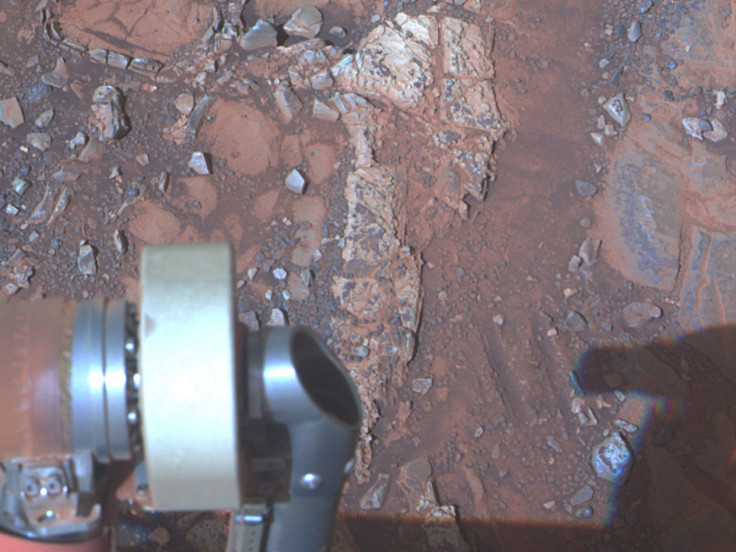NASA Opportunity Rover Finds Evidence Of Water On Mars [PHOTO]

NASA’S Mars rover Opportunity has discovered evidence that the planet once had nonacidic drinkable water suitable for the assembly of life's building blocks, scientists say.
The rover has been investigating Mars for a decade and is a part of the Mars Exploration Rover Mission launched in 2003. The second rover involved in that mission, Spirit, ceased being operational in 2010 after getting stuck in soft soil on Mars.
Opportunity was investigating a spot called Cape York when researchers discovered a cracked rock they believed had evidence of water. The features of the rock, called “Esperance,” had been changed by running water, and the researchers believe there was more than just trace amounts of evidence due to the erosion as well as the rock’s composition, NASA said in a statement.
Cornell astronomer Steve Squyres, the principal investigator for the mission, said “What's so special about Esperance is that there was enough water not only for reactions that produced clay minerals, but also enough to flush out ions set loose by those reactions, so that Opportunity can clearly see the alteration.” The rock’s composition included high levels of aluminum and silica, but lower levels of calcium and iron than were traditionally found in Mars rocks.
The water found within Esperance is nonacidic, as was the case in other Mars rocks, and researchers said it could have been suitable to the early process of creating life. “Water that moved through fractures during this rock's history would have provided more favorable conditions for biology than any other wet environment recorded in rocks Opportunity has seen,” Squyres said, pointing out to Space.com that the water found in Esperance was actually drinkable.
Opportunity’s discovery of suitable water to sustain life, along with Curiosity’s discovery that Mars could have supported microbial organisms can lead to a better understanding of the history of Mars, scientists believe. With these discoveries, researchers could be able to map out how Mars went from a planet that could have once sustained life, and had running water, to the barren red planet it is today.
Opportunity will soon relocate to Solander Point, located at the western edge of the Endeavour Crater, and the rover will continue to uncover evidence of Mars’ evolution. The rocks at Solander Point provide for deeper vertical cross-sections, which will allow Opportunity to dig deeper into Mars’ past, the researchers said.
© Copyright IBTimes 2024. All rights reserved.






















